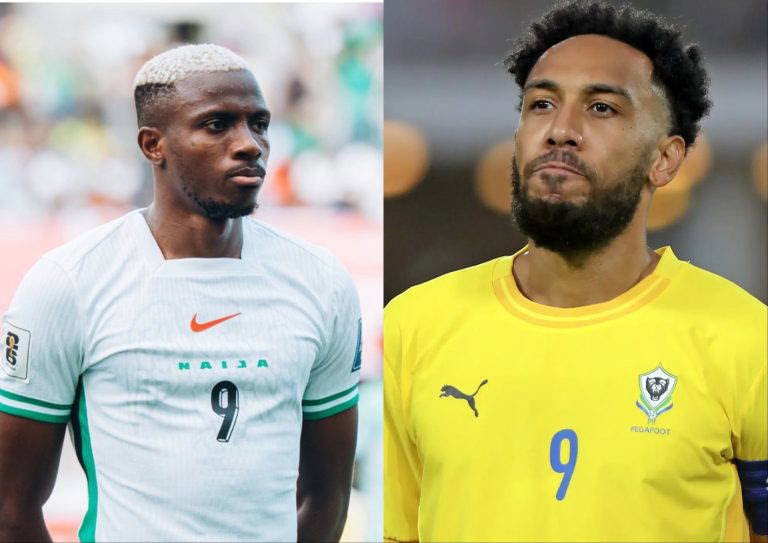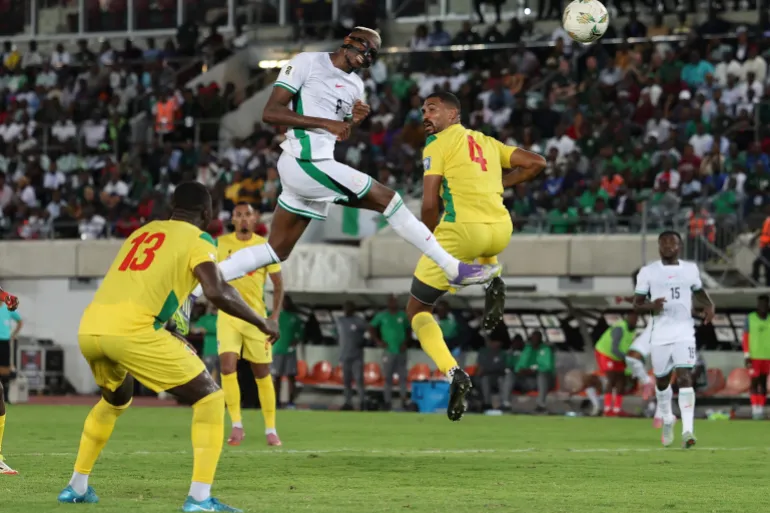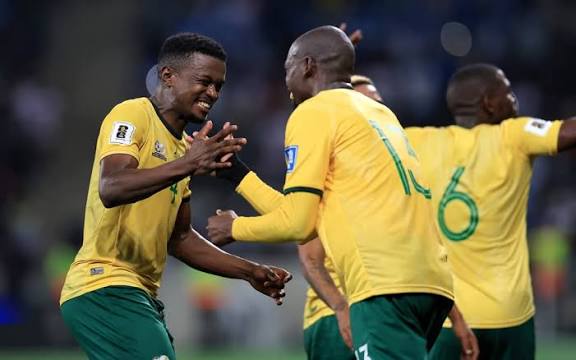Lesotho 0-3 South Africa: Match review, tactical takeouts, major highlights

South Africa national team, Bafana in celebration. Photo Credit- Pulse Sports
The Bafana Bafana of South Africa delivered a commanding 3-0 victory over Lesotho’s Likuena at the Free State Stadium in Bloemfontein on Friday, September 5, 2025, during Matchday 7 of the 2026 FIFA World Cup African Qualifiers in Group C. Despite being an away match for South Africa, the game was hosted on their home soil due to Lesotho’s lack of a FIFA-approved stadium, adding a unique dynamic to this regional derby. With South Africa solidifying their lead at the top of Group C, this review explores the tactics employed by both teams, key match highlights, referee officiating, lessons learned, and offers betting insights for future matches.
Lesotho vs South Africa match summary
South Africa, ranked 57th globally, strengthened their position at the summit of Group C with 16 points from seven matches, maintaining a five-point lead over second-placed Benin, who beat Zimbabwe 1-0 on the same day. Lesotho, ranked 151st, remain bottom with five points, their qualification hopes fading after a third consecutive qualifier without a win. Goals from Mohau Nkota (15th minute), Lyle Foster (63rd minute), and Oswin Appollis (67th minute) sealed a comprehensive win for Bafana Bafana, who dominated possession and capitalized on Lesotho’s defensive frailties.
South Africa’s tactical analysis
Hugo Broos deployed a 4-2-3-1 formation, emphasizing a high press and quick transitions, as seen in their 69% possession and 12 shots (six on target). Midfielders Teboho Mokoena and Jayden Adams controlled the tempo, with Mokoena’s long-range passing creating opportunities for wingers Relebohile Mofokeng and Oswin Appollis. The high press disrupted Lesotho’s build-up, forcing turnovers in dangerous areas, notably leading to Nkota’s opener. Lyle Foster, playing as the lone striker, exploited spaces behind Lesotho’s high defensive line, while full-backs Nyiko Mobbie and Aubrey Modiba overlapped to stretch the opposition. South Africa’s three set-piece goals in the qualifiers were evident, with Foster’s goal coming from a parried shot off a corner. Broos’ strategy to “fight for every square meter,” as told to CAFOnline, was executed through relentless pressure, with 82% pass accuracy and five first-half shots. Substitutions, including Iqraam Rayners and Kamogelo Sebelebele, added fresh legs to maintain intensity.
Lesotho’s tactical breakdown
Leslie Notsi opted for a 4-3-3 formation, prioritizing defensive solidity to counter South Africa’s attacking threat, as seen in their 39% possession against Nigeria earlier. Goalkeeper Sekhoane Moerane, supported by defenders Thabo Makhele, Fusi Matlabe, and Thabo Malane, aimed to absorb pressure and launch counters through lone striker Sera Motebang. Midfielders Jane Thaba-Ntso and Tsepo Toloane focused on breaking up play, but Lesotho struggled to transition, managing only three shots (one on target). Their set-piece reliance, with three qualifier goals from dead balls, was nullified by South Africa’s aerial dominance, led by Thabo Moloisane. Substitutions like Kananelo Rapuleng and Lebohang Lesako aimed to spark a comeback, but Lesotho’s compact setup crumbled under sustained pressure, particularly after conceding the second goal.
Major highlights in Lesotho vs South Africa
In the 15th Minute, South Africa struck early when Nkota latched onto a precise Mokoena pass, delivering a crisp volley across goal from a tight angle, beating Moerane. The goal set the tone for Bafana’s dominance, with Lesotho’s defense caught flat-footed. In the 45th Minute, Lesotho goalkeeper Sekhoane Moerane denied Thalente Mbatha’s left-footed strike from outside the box, keeping the score at 1-0 at halftime. This save highlighted Lesotho’s defensive resolve despite being under pressure.
In the 60th Minute, Lesotho’s Tsepo Toloane received a yellow card for a hard foul on Lyle Foster, risking a sending-off and disrupting Lesotho’s midfield organization.In the 63rd Minute, Lyle Foster doubled the lead, tapping in the rebound after Moerane parried Aubrey Modiba’s powerful strike from a corner, exposing Lesotho’s set-piece vulnerability. In the 67th Minute, Foster turned provider, setting up Appollis for a clinical finish, capping a swift counter-attack that highlighted South Africa’s superior fitness and attacking depth. In the 80th Minute, substitute Kananelo Rapuleng fed Motebang, who controlled well but saw his shot saved by Ronwen Williams, Lesotho’s closest chance to reduce the deficit.
At full time, Bafana Bafana’s emphatic win, with 60% possession and 12 shots, underlined their quality, while Lesotho’s late substitutions failed to change the game’s outcome.
Analysing the referee officiating
The match was officiated by referee Dickens Mimisa, with assistants Gilbert Cheruiyot and Saúl Berjón, and fourth official Josephine Wanjiku, per SuperSport. Mimisa maintained control, issuing two yellow cards to Lesotho players: Tsepo Toloane (60th minute) for a foul on Foster and Lehlohonolo Matsau (75th minute) for a challenge on Appollis. Both bookings were justified, as the fouls disrupted South Africa’s attacking flow, though Lesotho avoided further sanctions despite their physical approach. Mimisa added five minutes of stoppage time in the first half and three in the second, which was fair given stoppages for substitutions and fouls. Lesotho’s coaching staff protested a non-called foul on Motebang in the 70th minute, but replays showed minimal contact, supporting Mimisa’s decision. The officiating was consistent, with no major controversies, allowing the game to flow despite Lesotho’s tactical fouls.
Major lessons learned in Bafana’s victory
Bafana Bafana’s ability to maintain pressure through substitutions like Rayners and Sebelebele showcased their squad depth. Broos’ tactical flexibility, switching from patient build-up to rapid counters, overwhelmed Lesotho, offering a blueprint for their upcoming clash with Nigeria. Again, Lesotho’s 5-4-1 setup held firm early but crumbled under sustained pressure, particularly on set pieces. Notsi must address their vulnerability to crosses and improve midfield transitions to avoid being pinned back against stronger sides.
Moreover, South Africa’s second goal from a corner highlighted their set-piece prowess, while Lesotho failed to convert their three dead-ball goals in the qualifiers. Both teams must refine set-piece execution, as it remains a deciding factor in tight African qualifiers. Again, Lesotho’s two yellow cards reflected their frustration, disrupting their game plan. Maintaining composure against dominant opponents is crucial for underdogs like Likuena to stay competitive. Overall, Playing in Bloemfontein gave South Africa a psychological edge, with the crowd boosting their intensity. Lesotho must find ways to neutralize such advantages in neutral venues, possibly through earlier attacking intent.
Final take
South Africa’s 3-0 rout of Lesotho showcased their attacking prowess and tactical discipline, with Mohau Nkota, Lyle Foster, and Oswin Appollis capitalizing on Lesotho’s defensive lapses. Hugo Broos’ high-pressing 4-2-3-1 overwhelmed Leslie Notsi’s compact 5-4-1, which held firm early but faltered after conceding. Referee Dickens Mimisa managed the game effectively, with minimal controversy. South Africa’s depth and set-piece efficiency were decisive, while Lesotho’s lack of attacking threat and defensive errors underscored their struggles. As Bafana Bafana prepare for Nigeria on September 9, 2025, they remain on course for their first World Cup since 2010, while Lesotho must regroup to keep their faint playoff hopes alive.




